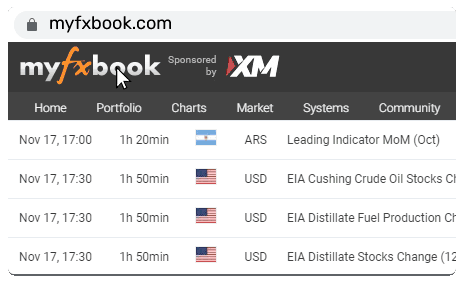What is the USD Trajectory Going Ahead Into 2023 Q4?

In the past month, the U.S. dollar index (DXY) remained largely stable, exhibiting fluctuations without a clear directional trend. During October, the dollar struggled to gain momentum in either direction. Over this period, the dollar strengthened against the Norwegian krone, Canadian dollar, and Japanese yen but weakened against the euro and Swiss franc. Its performance against emerging market currencies was mixed, reflecting the divergent trends in economic activity and monetary policies seen in currency markets.
However, we anticipate a more defined upward trajectory for the U.S. dollar in the coming months and quarters. This projection is based on my belief that the U.S. economy will experience a delayed recession, and the Federal Reserve (Fed) will postpone its easing cycle until mid-2024. This monetary policy stance should favour a stronger dollar in the early part of the next year.
Additionally, recent geopolitical developments, including conflicts in the Middle East and the ongoing Russia-Ukraine dispute in Eastern Europe, have created an uncertain backdrop. In response to these geopolitical tensions, I expect the U.S. dollar to strengthen as investors seek safe-haven currencies during this period of heightened instability.
Given the resilience of the U.S. economy and the Fed's hawkish-leaning monetary policy, combined with deteriorating economic conditions in Europe, I anticipate that the euro and British pound will underperform through the first quarter of 2024. Furthermore, due to less favourable economic conditions in Canada, I’ve grown more pessimistic about the prospects of the Canadian dollar in the next few quarters.
As we look ahead to the first quarter of 2024, I expect the Japanese yen to remain on the defensive, although substantial further depreciation is unlikely due to the Bank of Japan's potentially hawkish policy adjustments and Japan's Ministry of Finance signalling potential intervention in foreign exchange markets.
I also foresee upside potential for the U.S. dollar against emerging market currencies. Central banks in emerging markets have already initiated interest rate cuts, and the divergence between these actions and the Fed's hawkish stance should exert downward pressure on emerging market currencies. Latin American and EMEA central banks are aggressively cutting interest rates, leading me to predict that select currencies in these regions will be the most significant underperformers in the emerging markets.
For instance, I anticipate that the Chilean peso will underperform due to quick monetary policy easing and efforts to rebuild central bank FX reserves. I also expect weaker currencies in Colombia and Brazil as the Colombian central bank is likely to start an easing cycle, and policymakers in Brazil are expected to continue cutting interest rates. Among EMEA currencies, I hold a negative outlook for the Hungarian forint, given policymakers' more aggressive rate cuts than financial markets anticipate.
The prevailing tense geopolitical environment is expected to keep risk sentiment low, leading to a further depreciation of emerging market currencies, especially high-beta ones like those in Chile, Colombia, and Hungary.
Looking into the long term, my view remains that the U.S. dollar will generally depreciate against both G10 and emerging market currencies. This projection is rooted in the belief that the U.S. economy will eventually enter a recession, leading to the Fed's more aggressive interest rate cuts than what the markets currently anticipate.
As interest rate differentials shift against the U.S. dollar, I foresee foreign currencies strengthening over the second half of the following year and into 2025. While I expect a near-term decline in some foreign currencies, the Japanese yen is likely to recover more than most over time. Higher U.S. Treasury yields, a hawkish Fed, and a more accommodating Bank of Japan have weighed on the Japanese yen. However, should the Fed reduce policy rates as we anticipate, and even if the Bank of Japan continues its gradual monetary policy tightening, yield differentials should favour the Japanese yen in the long term.
As these dynamics unfold, I expect the USD/JPY exchange rate to reach JPY146.00 by the end of the following year. Furthermore, easier Fed monetary policy should alleviate some pressure on select emerging market currencies in the second half of the following year. Currencies that are not highly exposed to local political risks, such as those resulting from elections, and central banks with prudent approaches to monetary easing should outperform. In this context, certain currencies in emerging Asia can benefit from their political stability and a sustained "higher for longer" policy stance.
This content may have been written by a third party. ACY makes no representation or warranty and assumes no liability as to the accuracy or completeness of the information provided, nor any loss arising from any investment based on a recommendation, forecast or other information supplied by any third-party. This content is information only, and does not constitute financial, investment or other advice on which you can rely.



















